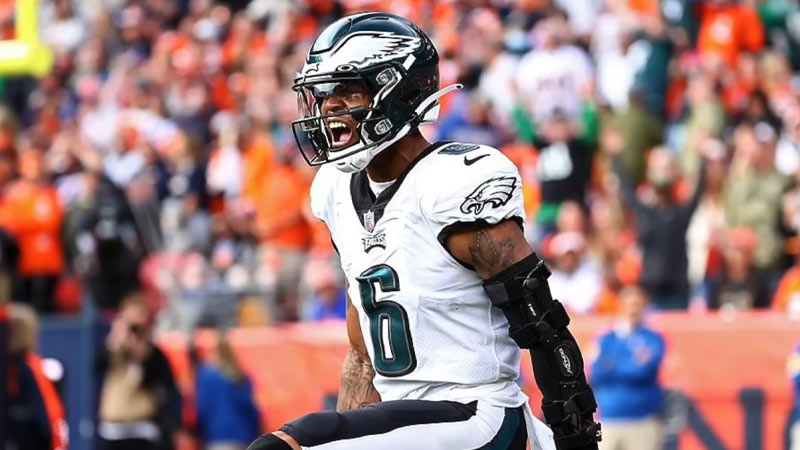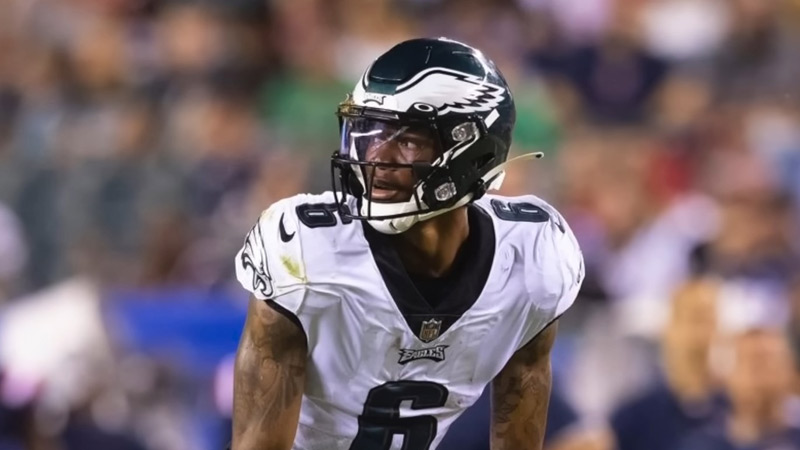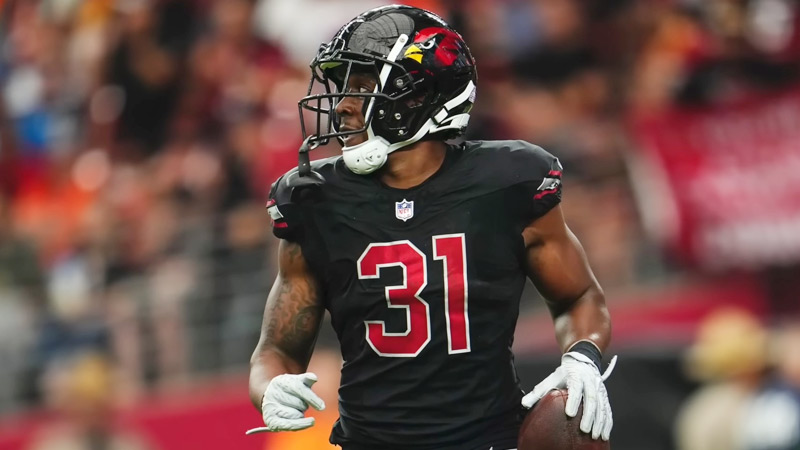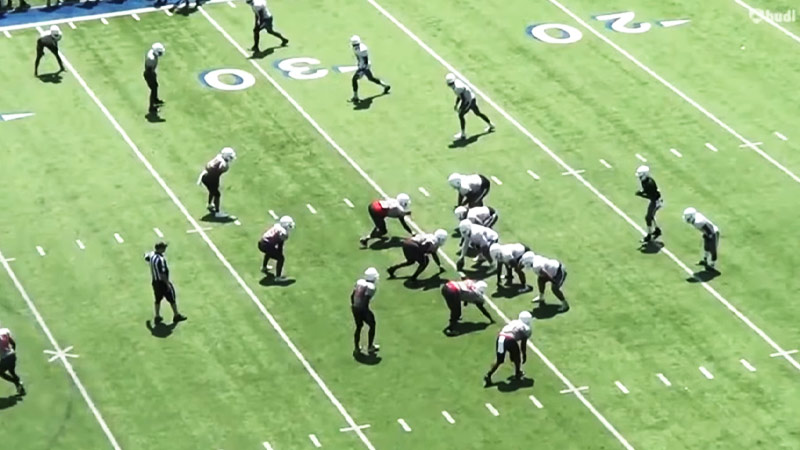In the dynamic world of American football, the linebacker corps forms a vital part of the defense, with each position carrying distinct responsibilities.
Among these positions, the “Sam linebacker” stands as a key player with a unique role and skill set. But what is a Sam linebacker, and how does their role differ from other linebackers on the field?
The Sam linebacker, often referred to as the “strongside linebacker,” is a fundamental component of a football defense. This linebacker position is known for its versatility, as it bridges the gap between run-stopping and pass coverage.
In this exploration, we will delve into the intricacies of the Sam linebacker’s role, uncovering their primary responsibilities and how they contribute to their team’s defensive strategy.
Whether you’re a seasoned football enthusiast or just beginning to delve into the sport, understanding the role of a Sam linebacker is crucial for grasping the complexities of defensive gameplay.
What Is a Sam Linebacker?

A Sam linebacker, often referred to as the strongside linebacker, is a pivotal position in American football, particularly in defensive schemes using a 4-3 alignment.
The Sam linebacker plays a multifaceted role on the defense, combining strength, agility, and football intelligence to contribute significantly to the team’s success.
Understanding the Position
To grasp the role of a Sam linebacker, it’s crucial to understand the basics of linebacker positions in American football. Generally, there are three primary linebacker positions:
Middle Linebacker (MLB)
Positioned at the center of the defense, the middle linebacker often acts as the “quarterback” of the defense, making calls and adjustments while being involved in both run-stopping and pass coverage.
Strongside Linebacker (SLB)
The strong linebacker lines up on the side of the offensive formation with more players, known as the “strong side.” They often have responsibilities related to setting the edge in run defense and covering tight ends.
Weakside Linebacker (Will)
This is where the Sam linebacker comes into play. The Sam linebacker lines up on the side of the offensive formation with fewer players, known as the “weak side.”
Their primary responsibilities revolve around pass coverage, pursuing ball carriers, and contributing to the pass rush.
What Are the Primary Responsibilities of a Sam Linebacker?

The Sam linebacker’s role can vary depending on the defensive scheme and the specific play called, but several core responsibilities remain consistent:
Setting the Edge
Setting the edge in run defense is a cornerstone of the Sam linebacker’s role. This responsibility entails positioning themselves on the outermost edge of the defensive formation, typically opposite the tight end or strong side of the offensive formation.
By maintaining outside leverage, the Sam linebacker effectively funnels running plays back toward the interior of the defense. This crucial task prevents ball carriers from turning the corner and gaining significant yardage on the perimeter.
It’s a physically demanding role that requires strength, discipline, and the ability to shed blocks while keeping containment.
Coverage
In today’s diverse and pass-heavy offensive schemes, Sam linebackers are often called upon to be versatile in coverage. They are frequently tasked with covering tight ends, slot receivers, or backs coming out of the backfield.
This demands proficiency in both man-to-man and zone coverage techniques. Sam linebackers use their size and athleticism to disrupt passing lanes, provide tight coverage on their assigned targets, and minimize the impact of opposing pass catchers.
Their coverage skills are essential in limiting the effectiveness of tight ends and slot receivers, who can be significant contributors to the passing game.
Blitzing
Sam linebackers bring an extra dimension to the defense with their ability to blitz the quarterback effectively. They are often used as a pass-rushing threat, and their skill in disguising their intentions is invaluable in creating pressure on the opposing quarterback.
The timing of their blitzes, combined with their pass-rushing techniques, can lead to sacks, quarterback hurries, and disruptive plays that affect the outcome of the game.
Run Support
While their primary responsibility is setting the edge, Sam linebackers are also key contributors to run support. They need to diagnose run plays quickly, read the offensive line’s movements, and react decisively.
This includes shedding blockers to make tackles when necessary. Their presence ensures that the defense remains stout against both inside and outside running plays, making it challenging for the offense to establish a consistent ground game.
Versatility
Versatility is a hallmark of a successful Sam linebacker. They often face diverse offensive formations and shifting personnel groupings, requiring them to adapt their responsibilities on the fly.
Whether it’s covering a tight end, blitzing the quarterback, or providing run support, their ability to seamlessly transition between roles and adjust to changing game situations makes them a valuable asset to the defense.
This adaptability allows the defense to remain unpredictable and versatile, making it difficult for the offense to exploit weaknesses.
What Are the Two Types of Linebackers?

In American football, linebackers are a critical component of the defense, playing a central role in stopping the opposing team’s offense. There are two primary types of linebackers: inside linebackers and outside linebackers.
These two types of linebackers have distinct roles, responsibilities, and skill sets, each contributing uniquely to the defensive strategy.
Inside Linebackers (ILBs)
Inside linebackers are positioned closer to the center of the field and are typically involved in plays that occur between the tackles.
There are generally two inside linebackers in a typical 3-4 or 4-3 defensive formation, known as the “Mike” and “Will” linebackers. Their roles and responsibilities differ but are both integral to the success of the defense.
Mike Linebacker
Also known as the middle linebacker, the Mike linebacker is often considered the “quarterback” of the defense.
The Mike linebacker is responsible for making defensive calls, relaying them to the rest of the defense, and adjusting the defensive formation based on the offensive alignment.
Mike linebackers are crucial in stopping the run. They read the offensive play, fill gaps, and make tackles to prevent running backs from gaining yardage.
While their primary focus is on run defense and play-calling, Mike linebackers must also be capable of covering short and intermediate passing routes in zone coverage.
Will Linebacker
The Will linebacker, also known as the weakside linebacker, plays a different but equally vital role within the inside linebacker duo.
Will linebackers are often tasked with covering running backs, tight ends, or even wide receivers in passing situations. They need to excel in both man-to-man and zone coverage, showcasing their agility and anticipation to break up passes or make interceptions.
Will linebackers must be fast and agile to cover ground quickly and pursue ball carriers from sideline to sideline. They play a critical role in preventing long runs and screen passes.
Will linebackers are frequently called upon to blitz the quarterback. Their speed and ability to disguise their intentions are valuable assets when trying to pressure the passer.
Outside Linebackers (OLBs)
Outside linebackers are positioned on the outer edges of the defensive formation, closer to the sidelines. There are typically two outside linebackers in a standard 3-4 defensive alignment.
These players have a more versatile role, blending elements of pass rushing, run defense, and pass coverage. The two primary types of outside linebackers are the “Sam” and “Jack” linebackers.
Sam Linebacker
The Sam linebacker, also known as the strongside linebacker, lines up on the side of the offensive formation with more players, commonly the side where the tight end lines up.
One of the primary duties of the Sam linebacker is to set the edge in run defense on the strong side of the formation. They maintain outside leverage, preventing ball carriers from turning the corner and gaining yardage on the perimeter.
Sam linebackers are often tasked with covering tight ends or slot receivers in pass coverage. They need to excel in both man-to-man and zone coverage, using their size and athleticism to disrupt passing lanes.
Sam linebackers are frequently utilized as blitzers. Their ability to disguise their intentions, time their rushes effectively, and use their strength makes them valuable in pressuring the quarterback.
While setting the edge is a crucial run-stopping responsibility, Sam linebackers also need to diagnose run plays, shed blockers, and make tackles when necessary.
FAQs
What’s the main difference between inside and outside linebackers in football?
The main difference lies in their positioning and roles. Inside linebackers are positioned closer to the center of the field and often focus on run defense and play-calling, while outside linebackers line up on the edges of the formation and have a more versatile role.
Can a player switch between inside and outside linebacker positions?
In some cases, players with the right skills and attributes can transition between inside and outside linebacker positions. However, it often requires adjustments in their playing style, responsibilities, and skill development to adapt to the new position effectively.
What’s the difference between a Mike and Will linebacker compared to a Sam and Jack linebacker?
Mike and Will linebackers are inside linebackers, focusing on run defense, pass coverage, and play-calling. Sam and Jack linebackers are outside linebackers, with Sam linebackers emphasizing setting the edge, pass coverage, and blitzing.
Are there any other linebacker positions besides the ones mentioned?
While Mike, Will, Sam, and Jack are the primary linebacker positions, there can be variations and hybrid roles depending on defensive schemes. Some teams may employ unique linebacker positions tailored to their specific defensive strategies.
How do linebackers contribute to the overall success of a defense in football?
Linebackers play a critical role in a defense’s success. They are responsible for stopping the run, covering receivers, pressuring the quarterback, and making key plays like interceptions and sacks.
Conclusion
In the ever-evolving world of American football, the Sam linebacker emerges as a multifaceted and essential component of any formidable defense.
This position’s versatility, combining strength, agility, and football intelligence, enables it to bridge the gap between run-stopping and pass coverage.
As we’ve delved into in this article, the Sam linebacker’s role encompasses a wide range of responsibilities, from setting the edge in run defense to covering tight ends and contributing to pass rush efforts.
Understanding the intricacies of the Sam linebacker’s role enhances one’s appreciation for the strategic chess match that unfolds during every play.
Their ability to adapt to the ever-changing dynamics of the game, react to offensive maneuvers, and contribute to their team’s success showcases the brilliance of American football.
So, the next time you’re watching a football game, pay close attention to the Sam linebacker. Their contributions may not always be in the spotlight, but their impact on the outcome of the game is undeniable.







